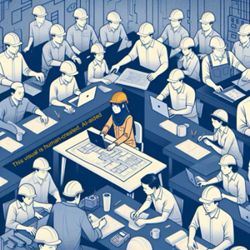
Tun Aminah Maimunah (centre) and Onn Hafiz (left, in front) listening to an exhibitor explain about a product at the Johor Smart City Forum in Johor Baru.
A SEVEN-prong blueprint to steer Johor forward has been birthed by the Town and Country Planning Department (PLAN Malaysia) and the state government.
Johor Mentri Besar Datuk Onn Hafiz Ghazi said Johor Smart City Blueprint 2030 was in line with the target to reach developed status by 2030.
“However, we want to be developed not just in terms of the economy, gross domestic product and income per capita, but also in terms of thinking.
“I am confident that we can reach our target with concerted effort from all parties,” he said in his opening speech at the three-day Johor Smart City Forum.
He said the blueprint, a brainchild of his predecessor former mentri besar Datuk Seri Hasni Mohammad, documented the state government’s commitment in planning and implementing smart cities that are systematic and people-centric.
“The blueprint comprises seven components.
“They are smart government, smart people, smart economy, smart living, smart mobility, smart environment and smart digital infrastructure.
“From that, a total of 29 policies, 54 strategies, 111 projects involving 119 agencies as well as 124 target indicators have been drafted to guide local councils, agencies and stakeholders.”
Onn Hafiz said he appreciated the efforts made to organise the forum, which was launched by Johor Princess Tunku Tun Aminah Maimunah Iskandariah Sultan Ibrahim, and hoped the outcome would benefit the four million people in the state.
The princess also presented a copy of the blueprint to the mayors and presidents of all 16 councils and municipalities in the state.
It is understood that under smart government, Johor aims to encourage the public’s acceptance of technology to give them access to online services while smart people refers to producing highly-skilled talents to cater to digital industry needs.
Smart economy refers to using the latest digital technology such as Internet of Things (IoT), big data and artificial intelligence (AI) to increase productivity and create new opportunities, while smart living looks at using technology to improve homes, quality of life and crime fighting.
Smart mobility focuses on improving public transport while reducing carbon emission.
Smart environment puts the emphasis on renewable energy which can fight climate change, and improve air and water quality. There is also a focus on proper waste management.
Lastly, smart digital infrastructure focuses on improving telecommunication services as well as creating an environment that supports urban activities and people’s mobility.






































